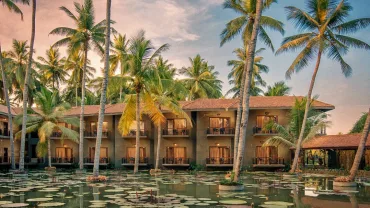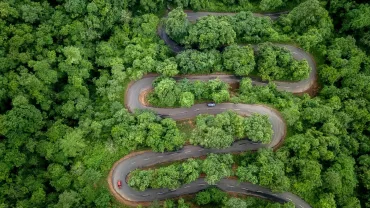- Blog
- 25 Sep 2021
Coringa Wildlife Sanctuary – Kakinada
About Coringa is a beautiful Mada or Mangrove Forest, where the river Godavari joins the backwaters of the Bay of Bengal. Between this area and the sea ” Hope Island ” blocks the direct confluence of the sea and Godavari. As a result, about 40% of the sanctuary is only sea-backwaters and the rest of […]
- Blog
- 23 Sep 2021
Sir Arthur Cotton Museum – Dhavaleswaram
About Sir Arthur Cotton Museum It was established in the memory of the great engineer Sir Arthur Cotton. The museum exhibits various models which depict the construction of the mighty barrage across Godavari River by a British irrigation engineer. He was also known as Cotton Dora. He was also the Delta Architect of Godavari District. […]
- Blog
- 23 Sep 2021
About Dindi Resorts Dindi is a village in East Godavari district on the intersection where the Godavari River joins the Bay of Bengal, known for coconut plantations and resorts. Dindi is a place of scenic views and peace and quiet and beach treks, or backwater trips, and even visit the spot where the Godavari meets […]
- Blog
- 23 Sep 2021
Rajahmundry Godavari Bridge It is Asia’s third-largest road cum railway bridge crossing over the beautiful River Godavari. The bridge is 4.1km long and was commissioned by the South Central Railway division of Indian railways. Its construction began in early 1970 by Braithwaite, Burn, and Jessop Construction Company and was inaugurated by the then President of […]
- Blog
- 15 Sep 2021
Maredumilli Eco Tourism – East Godavari
About Maredumilli Eco Tourism Maredumilli Eco Tourism Area is managed by the local indigenous tribal community of Valamuru, Somireddypalem, and Valmeekipeta Vana Samrakshana Samithi people with of Andhra Pradesh Forest Department. It provides a unique opportunity to the native ethnic community to spread the message of conservation to the masses. This area has many waterfalls […]




